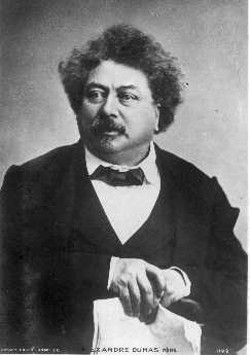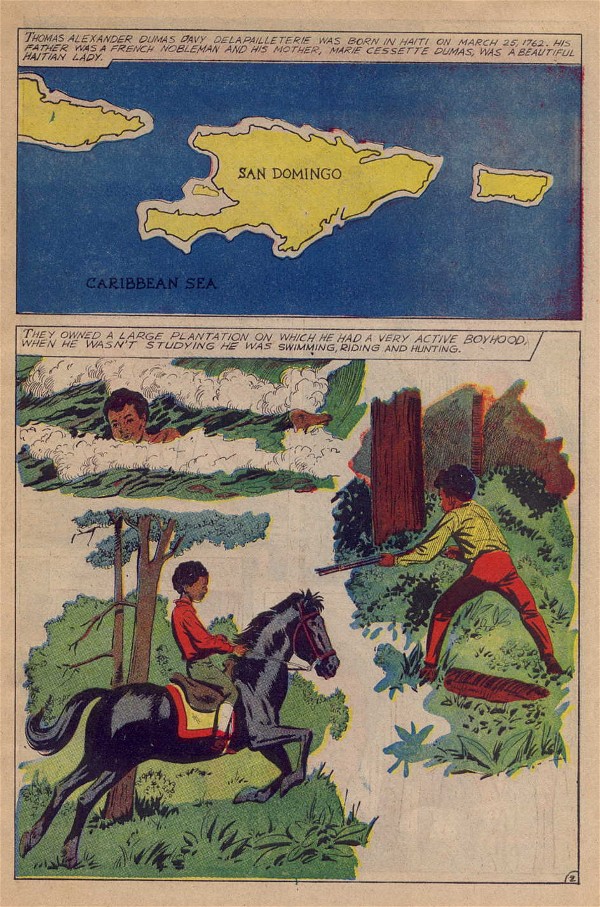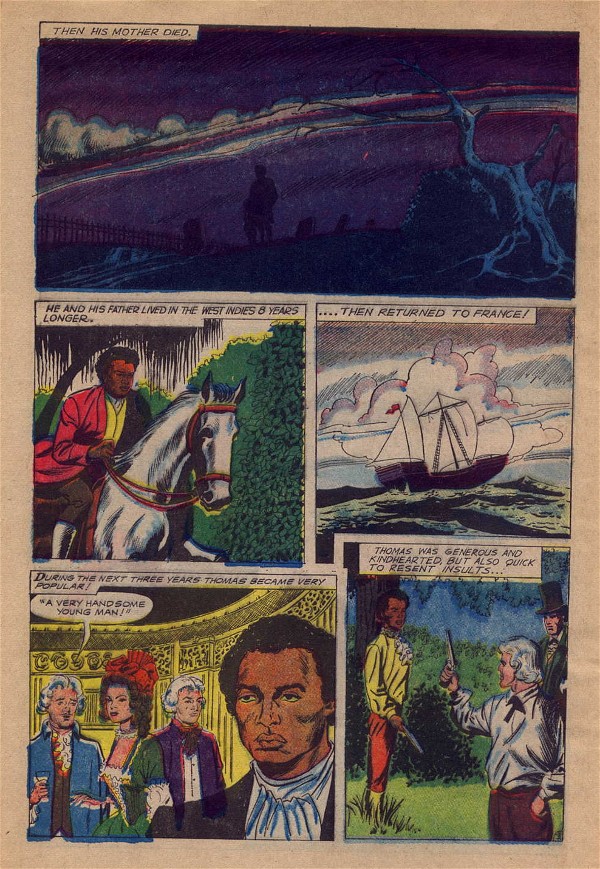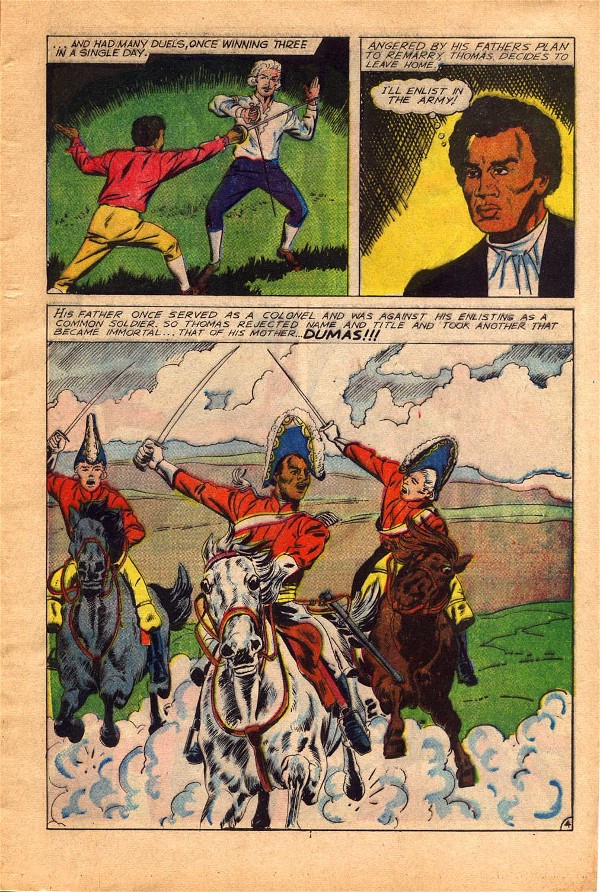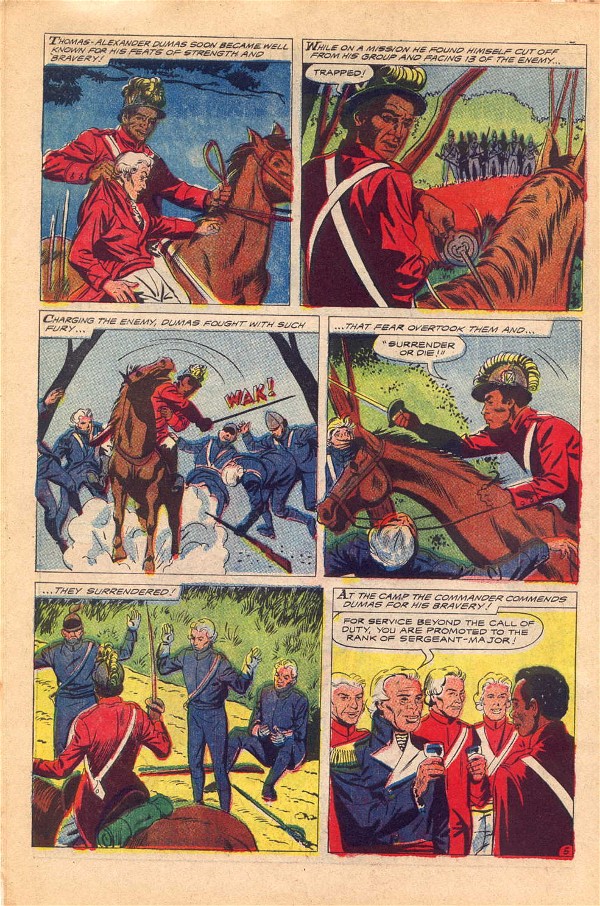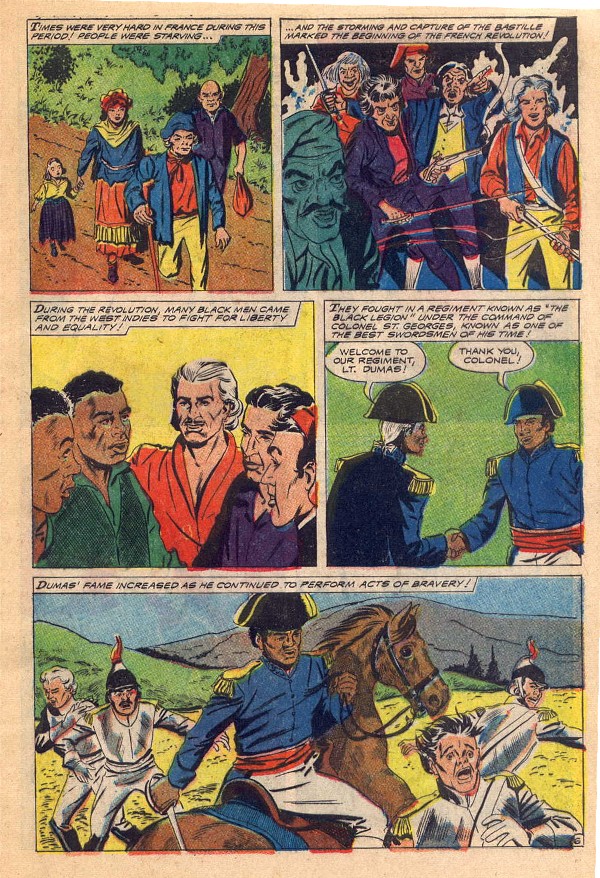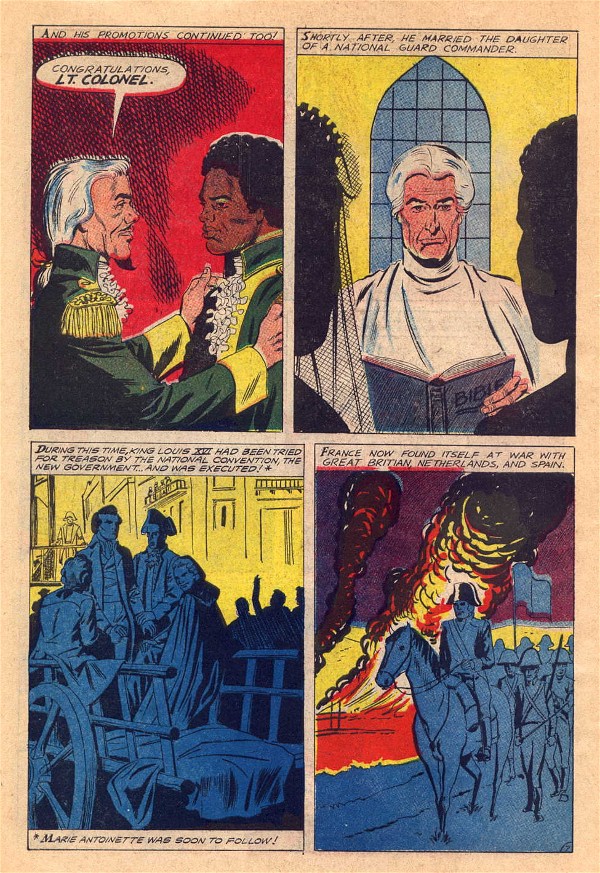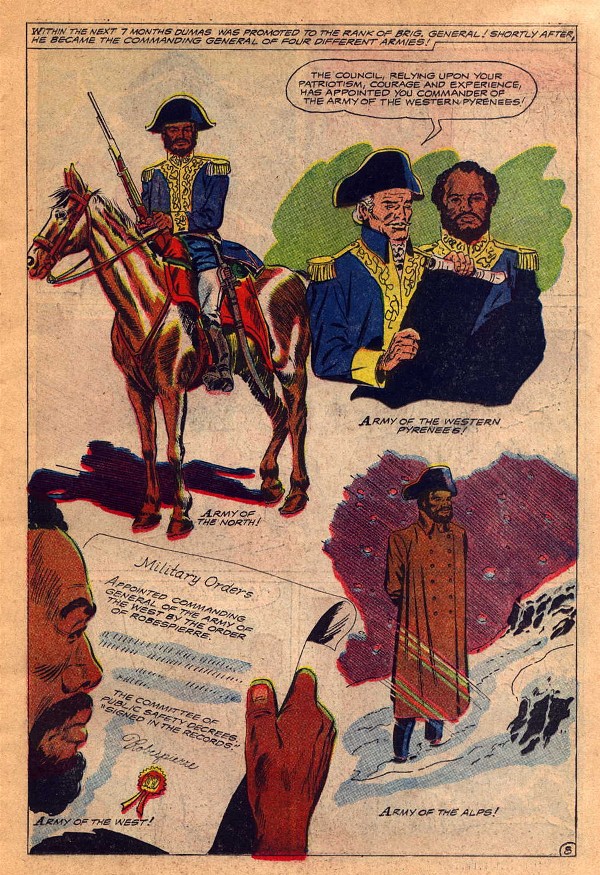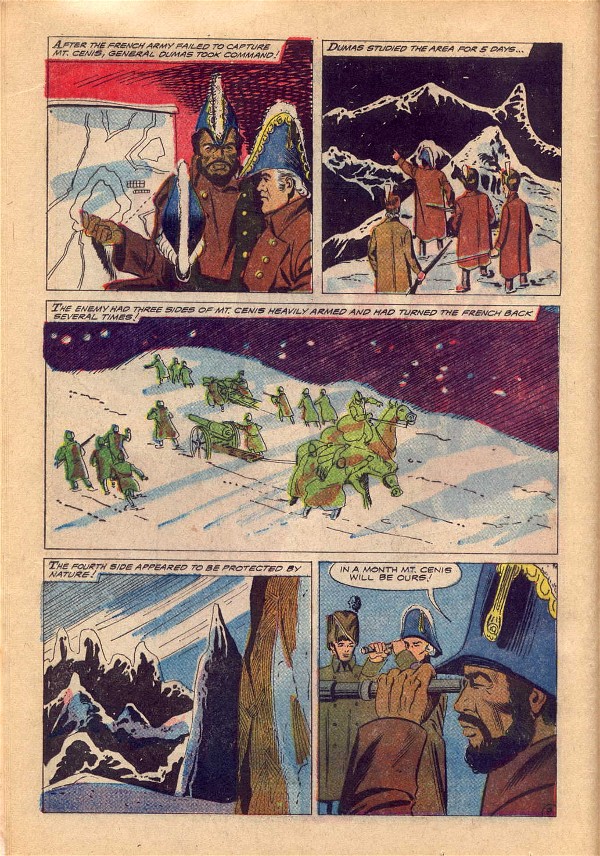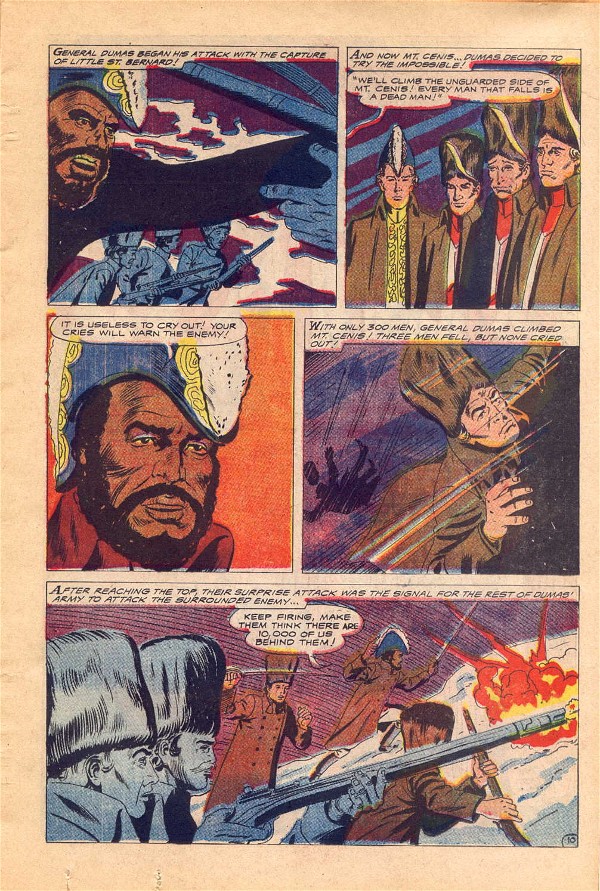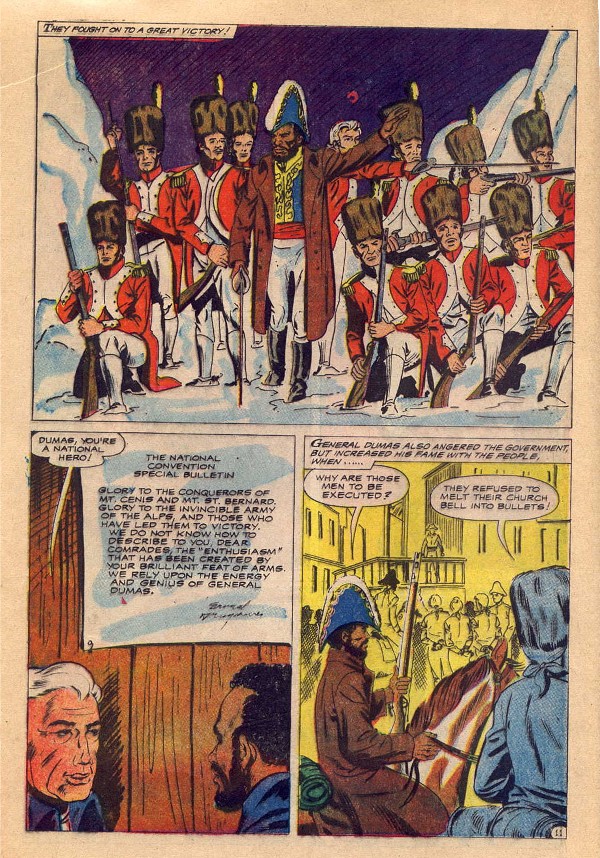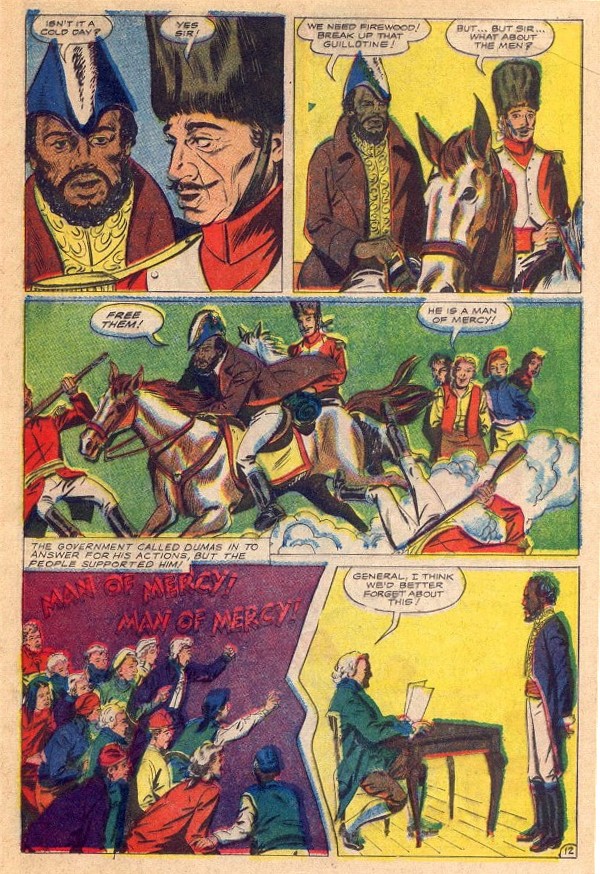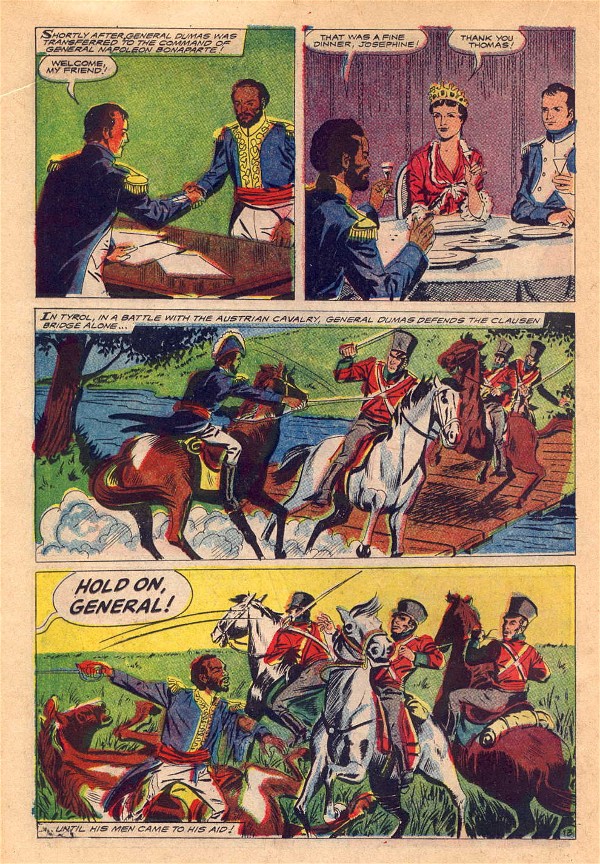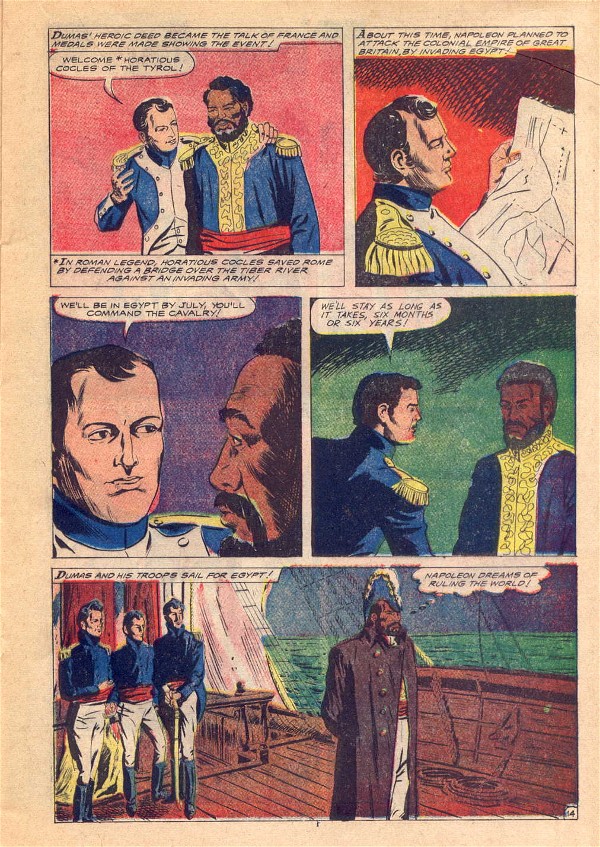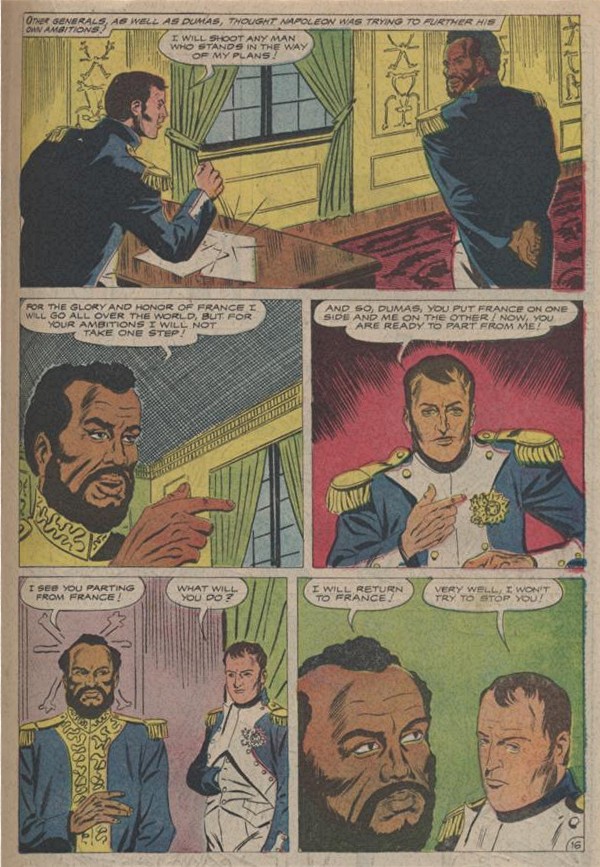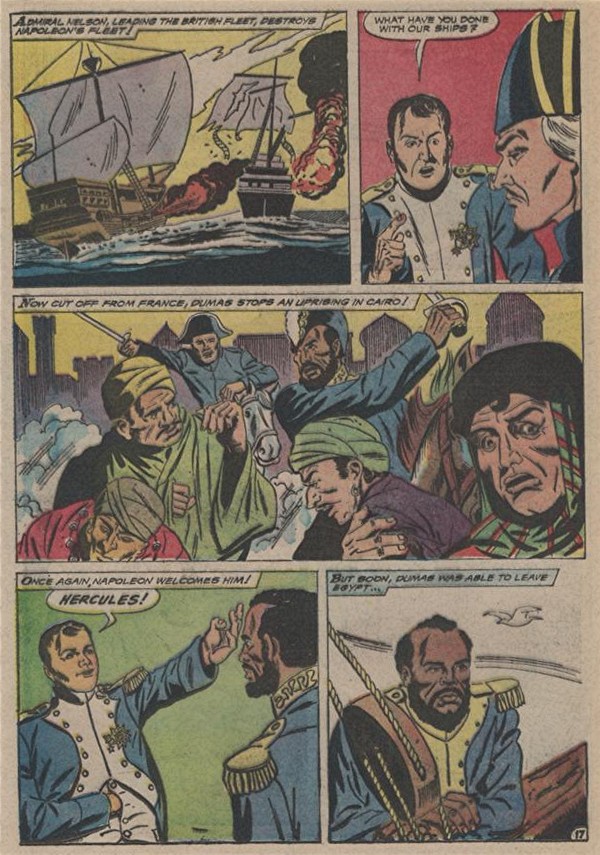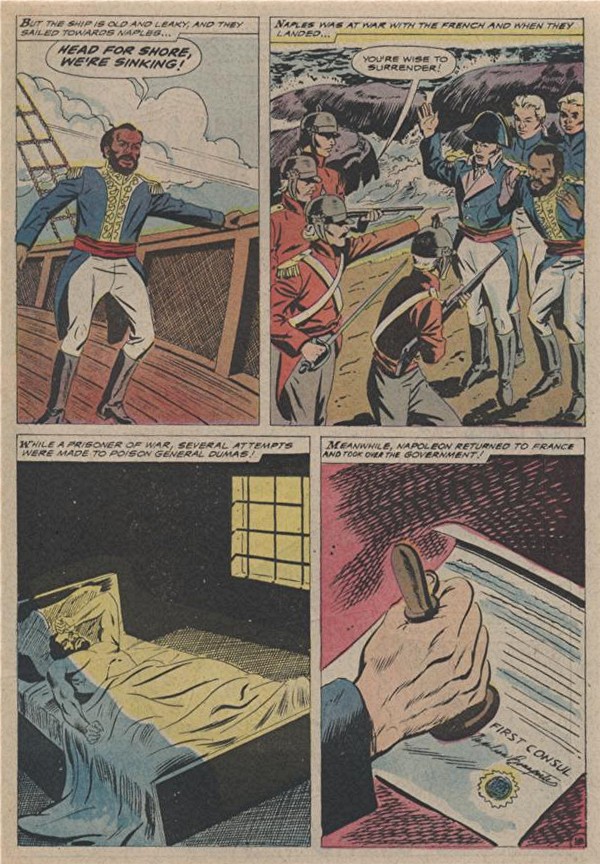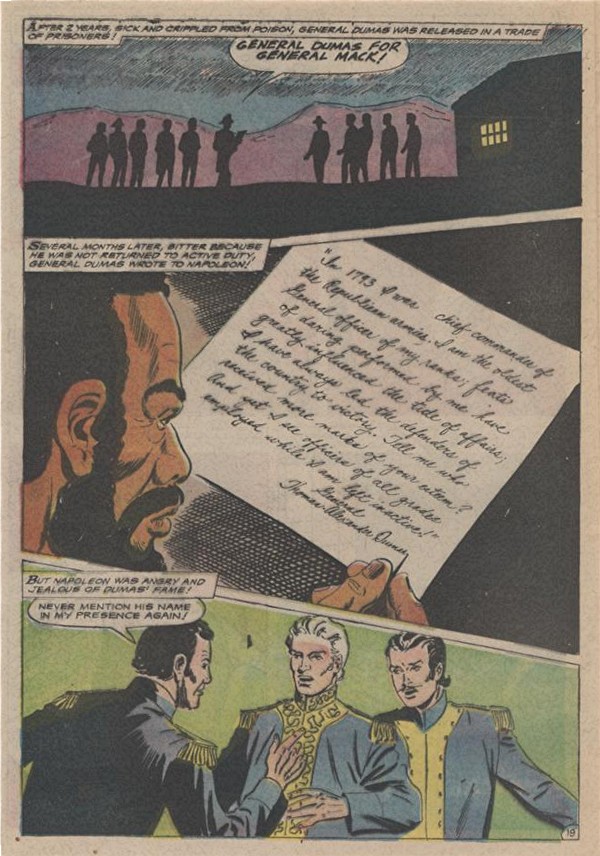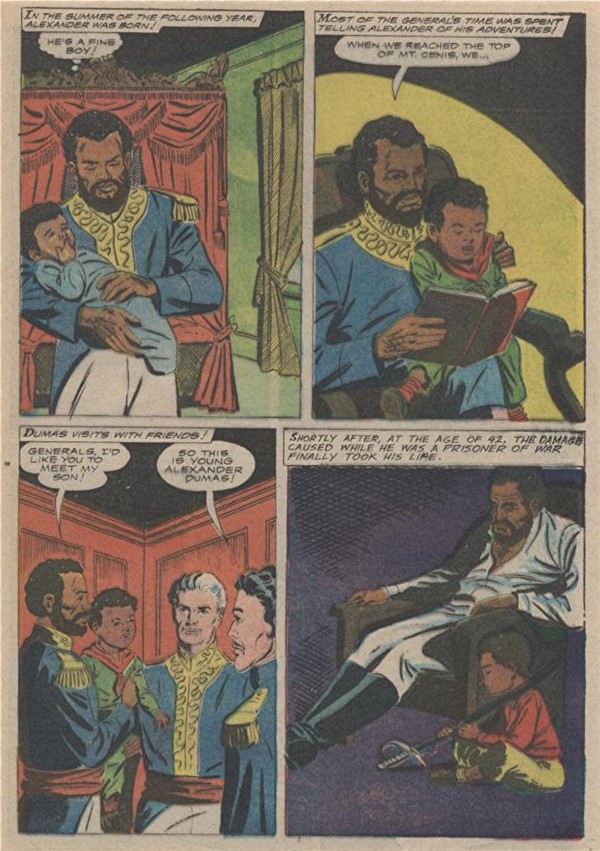
|
50's and 60's European racing cars
|
Alexandre DumasThe world's greatest story teller
Alexandre Dumas 1802-1870 Hey, this dude could really write! Alexandre Dumas is a French author of the 19th century. He wrote over 200 novels and is best known for his timeless classics The Three Musketeers and The Count of Monte Cristo. His uncanny ability to bring historical figures to life is what makes him famous. He introduces the reader to Bonaparte, Catherine De Medici, Charles the 5th, Marie Antoinette and many more.
Alexandre Dumas is my favorite author. The majority of his 200 novels are really kick #**@! This guy is so great he even has a candy bar named after one of his books. Everyone knows the motto of the Three Musketeers is "All for one and one for all". You have probably heard of the Count Of Monte Cristo too. The funny thing is that only a few of his books are continually made in to movies and the other multiple GREAT stories are neglected by Hollywood. I study, collect, read, buy and sell his books. Below is a pictoral history of the Dumas family:
He was born in Villes-Cotterêts, France the son of a French General and innkeepers daughter. His grandfather Alexandre Davie De la Palantiere (a French nobleman) settled in Santo Domingo and married Marie-Cessette Dumas an Afro-Caribbean who had been a black slave in that French colony. Their son, Dumas's father, was educated in France and then joined Napoleon's army as a private under his mothers name of Dumas. He proved him self many times in battle and advanced quickly to the rank General. He became known as "Napoleon's famous black General". He was eventually captured and imprisoned by the British. By this time he had fallen out with Napoleon and in fact Napoleon refused to pay his ransom. He returned to France years later with broken health. After his death in 1806 the family lived in poverty. The young Alexandre Dumas worked as a notary's clerk in Villers-Cotterêtes and went in 1823 to Paris to find work. Due to his elegant handwriting he secured a position with the Duc d'Orléans - later King Louis Philippe. He also found his place in theater and as a publisher of some obscure magazines. An illegitimate son called Alexandre Dumas fils, whose mother, Marie-Catherine Labay, was a dressmaker, was born in 1824. Dumas was an omnivorous reader. Especially he was interested in plays. His first produced drama was LA CHASSE ET L'AMOUR, written with with Adolphe de Leuven and P.J. Rosseau. It opened on September 22, 1835 at Théâtre de l'Ambigu-Comique. As a playwright Dumas made his breakthrough with HENRI III ET SA COUR (1829), produced by the Comédie-Française. The romantic drama about power and love was set in the Renessaince court of Henry III and drew on Louis-Pierre Anquetil's Histoire de France and Pierre de L'Estoile's Memoires-journaux. It gained a huge success and Dumas went on to compose additional plays, of which LA TOUR DE NESLE (1832, The Tower of Nesle) is considered the greatest masterpiece of French melodrama. It was written in collaboration with Frédéric Gaullardet. The action centered around the doomed Queen Marguerite de Bourgogne, who had ordered her illegitimate sons to be killed, but who appear into her life twenty years later. He wrote constantly, producing a steady stream of plays, novels, and short stories. "All for one, one for all, that is our device." (from The Three Musketeers) Before 1843 Dumas wrote fifteen plays. Historical novels brought Dumas enormous fortune, but he could spent money faster than he made it. He produced some 250 books with his 73 assistants, especially with the history teacher Auguste Maquet, whom he wisely allowed to work quite independently. Dumas earned roughly 200,000 francs yearly and received an annual sum of 63,000 francs for 220,000 lines from the newspapers La Presse and the Constitutionel. Maquet often proposed subjects and wrote first drafts for some of Dumas' most famous serial novels, including LES TROIS MOUSQUETAIRES (1844, The Three Musketeers) and LE COMTE DE MONTE-CRISTO (1844-45, The Count of Monte-Cristo). Dumas himself claimed that he only began writing his books when they were already completed in his head. As a master dialogist, Dumas developed character traits, and kept the action moving, and composed the all-important chapter endings - teaser scenes that maintained suspense and readers interest to read more. The adventures of the three musketeers has inspired many film versions, although the story itself was problematic for American film directors for some decades due to Hollywood's Production Code: d'Artagnan is in love with a married woman, Constance, and has a relationship with Milady de Winter, who actually is Athos' wife, and he feels attraction to Milady's maid, Kitty, whose passionate glances he doesn't first notice. "Then only D'Artagnan remembered the languishing glances of Kitty, her constantly meeting him in the antechamber, the corridor, or on the stairs, those touches of the hand every time she met him, and her deep sighs; but absorbed by his desire to please the great lady, he had disdained the soubrette. He whose game is the eagle takes no heed of the sparrow." The story of the King's Musketeers was continued in Twenty Years After (1845) and The Vicomte Bragelonne (1848-50). The latter has also inspired several film adaptations of the unwanted twin brother of the king, Philippe, imprisoned in Bastille. His face is covered with an iron mask to hide his true identity. Philippe was "clothed in black and masked by a visor of polished and steel soldered to a helmet of the same nature, which altogether enveloped his whole head. The fire of the heavens cast red reflections upon the polished surface, and these reflections, flying off capriciously, seemed to be angry looks launched by this unfortunate..." Dumas' heroes die romantically in different battles - Porthos is killed by king's men, d'Artagnan is killed in Holland by a stray bullet. At the end of the story, only Aramis is still alive. Dumas' role in the development of the historical novel owes much to a coincidence. The lifting of press censorship in the 1830s gave rise to a rapid spread of newspapers. Editors began to lure readers by entertaining serial novels. Everybody read them, the aristocracy, and the bourgeoisie, young and old, men and women. Dumas' first true serial novel was LE CAPITAINE PAUL (1838, Captain Paul), a quick rewrite of a play. It was addressed to a female readership and added 5,000 subscribers to the list of Le Siècle when it was serialized. Along with Balzac and other writers, he also contributed to Emile de Girardin's weekly, La Mode, which became the voice of an aristocratic and wordly tout-Paris. Dumas lived as adventurously as the heroes of his books, and his way of life created a number of anecdotes. When he was asked to contribute 25 francs to bury a bailiff he gave 50 francs and said: "There you are - bury two of them." He took part in the revolution of July 1830 and became a captain in the National Guard, caught cholera during the epidemic of 1832, and traveled in Italy to recuperate. He married his mistress Ida Ferrier, an actress, in 1840, but he soon separated after having spent her entire dowry. With the money earned from his writings, he built a fantastic château de Monte-Cristo on the outskirts of Paris. In 1850 appeared The Black Tulip, a romantic adventure set in the 17th century Holland. In the middle of the political struggle for freedom is Cornelius van Baerle, a young man who has devoted himself to tulip-growing. Cornelius is falsely imprisoned for high treason. With the help of Rosa, the daughter of a jailer, he manages to grow a black tulip. Cornelius wins his freedom and hundred thousand guilders in glittering gold pieces as reward for the tulip. "This tulip," continued the Prince, "will therefore bear the name of its producer, and figure in the catalogue under the title, Tulipa nigra Rosa Barlaensis, because of the name Van Baerle, which will henceforth be the name of this damsel." In 1851 Dumas escaped his creditors to Brussels. He spent two years there in exile and then returned to Paris and founded a daily paper called Le Mousquetaire. In 1858 he traveled to Russia and in1860 he went to Italy, where he supported Garibaldi and Italy's struggle for independence (1860-64). He then remained in Naples as a keeper of the museums for four years. After his return to France his debts continued to mount. Called as "the king of Paris", Dumas earned fortunes and spent them right away on friends, art, and mistresses. He was professed to have had dozens of illegitimate children, but he acknowledged only three. According to a story, when Dumas once found his wife in bed with his good friend Roger de Beauvoir, he said: "It's cold night. Move over and make room for me." Dumas died of a stroke on December 5, 1870, at Puys, near Dieppe. It is claimed that his last words were: "I shall never know how it all comes out now," in which he referred to his unfinished book. Dumas' son Alexandre Dumas fils, became a writer, dramatist, and moralist, who never accepted his father's lifestyle. Dumas did not generally define himself as a black man, and there is not much evidence that he encountered overt racism during his life. However, his works were popular among the 19th-century African-Americans, partly because in The Count of Monte-Cristo, the falsely imprisoned Edmond Dantès, may be read as a parable of emancipation. In a shorter work, GEORGES (1843, George), Dumas examined the question of race and colonialism. The main character, a half-French mulatto, leaves Mauritius to be educated in France, and returns to avenge himself for the affronts he had suffered as a boy. Dumas' central works created a romantic fictional history of France, but they also had supernatural elements and characters, that preceded the superheroes of the 20th-century. These stories include LE CHÂTEAU D'EPPSTEIN (1844), a ghost story, LES FRÈRES CORSE (1844), where Siamese twins, separated at birth, maintain a psychic knowledge of each other's dire fates, ISAAC LAQUEDEM (1853), a Wandering-Jew tale, and LE MENEUR DE LOUPS (1857), where a young man agrees a pact with the Devil. His play, LE VAMPIRE (1851), was a Byronic vampire tale. Dumas' story The Man in the Iron Mask was based on the legend of Louis XIV's twin brother. The legend also had inspired Voltaire and Victor Hugo's play Les Jumeaux (1839). The Count of Monte Cristo (1844-45) - The protagonist, Edmond Dantés, is about to marry his sweetheart and become a captain of a vessel. He is framed by three enemies as a Napoleonic conspirator, shortly before Napoleon's dramatic return from Elba in 1815. Dantés is imprisoned in the Chateau d'If, by the politician Villefort who is anxious to conceal his own father's machinations on behalf of Bonaparte. Educated by the Abbé Faria, Dantés remains in the French Alcatraz 14 years, before he manages to escape, in a highly dramatic manner. He flees to the island of Monter Cristo, and locates a fabulous treasure, hidden since the time of Renaissance. As the Count of Monte Cristo and with the wealth of the treasure Dantés destroys his enemies and shows the wrong side of the bourgeois world. - The novel originated from Dumas' acquaintance with Jérôme Bonaparte, Napoléon Bonaparte's brother, whose younger son Dumas took occasionally on short educational journeys. Returning from Elba, Dumas spotted another island, the deserted Monte-Carlo, about which he determined to write a novel in remembrance of the trip. 'Let it be as you wish, my sweet angel' said the Count. 'God has sustained me against my enemies and I see now He does not wish me to end my triumph with repentance. I intended punishing myself, but God has pardoned me! Love me, Haydee! Who knows? Perhaps your love will help me to forget all I do not wish to remember! Come, Haydee!' (from The Count of Monte Cristo) For further reading: Alexandre Dumas pére by Hippolyte Parigot (1902); The Fourth Musketeer by J. Lucas-Dubreton (1928); The Laughing Mulatto by R. Todd (1940); Alexandre Dumas by A.C. Bell (1950); Alexandre Dumas: A Great Life in Brief by André Maurois (1955); The Titans by André Maurois (1957); The Life and Writings of Alexandre Dumas by Harry A. Spurr (1972); Alexandre Dumas père et la Comèdie Française by F. Bassan and S. Chevalley (1972); Alexandre Dumas (père) by Richard S. Stowe (1976); Alexandre Dumas by F.W.J. Hemmings (1979); 'Missing' Works of Alexandre Dumas, Pere by Douglas Munro (1983); Alexandre Dumas: Genius of Life by Claude Schopp (1989); General Alexandre Dumas: Soldier of the French Revolution by John G. Gallaher (1997) - Museum: Chateau de Montecristo, 1 avenue Kennedy, 78560 Port-Marly, Yvelines - home of Alexandre Dumas, where he wrote The Three Musketeers and The Count of Monte-Cristo; Musée Alexandre Dumas, 24 rue Démoustier, 02600 Villes-Citterêts - museum devoted to Alexnadre Dumas and Alexandre Dumas fils. - Note: Dumas' novel La Royale Maison de Savoie, which appeared first in 1854 serialized in an Italian magazine, was published again in four volumes. - Suom.: Dumasin romaaneista on suomennettu noin kolmekymmentä, mm. Joel Lehtosen kääntämänä teokset Kirjekyyhkynen, Mestari Aadam Kalabrialainen sekä Jalmari Finnen käännöksinä Ange Pitou ja Bastiljin valloitus. Selected works:
|
